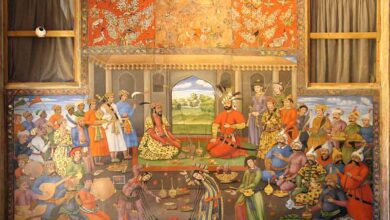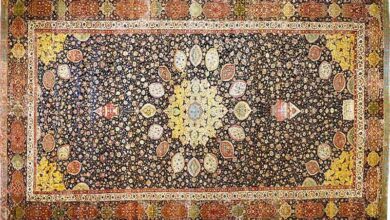Paparazzi, For A Handful of Dollars!

Alireza Karimi Saremi: In this new age, in the midst of these boundless magical waves, human beings find themselves in complete insecurity. No human being is hidden from the eyes and opinions of others.
In this complex process, man is a bewildered creature who has created the cause of this turmoil. He is immersed in this so-called Global Village and in this world of communications, and he always sees his soul naked in the media waves; A horrible dream, in sleep and wakefulness, in the eyes of others.
Nevertheless, communications and media sciences are an integral part of today, and without them, the life of a wise man would be difficult. Newspapers, periodicals and magazines became popular in the West from the end of the 18th century onwards, when their number was relatively small. But a century later, such print material became part of the daily experience of millions and influenced their attitudes and beliefs. [1]
This led to the development of group communication, which expands the scope of socialization every year. As the spread of print mass media was later accompanied by the use of electronic communications, television became increasingly powerful, influencing different age groups at different times of the day. The result is that today, with the advent of the new generation of smartphones, telecommunications satellites, the digital and virtual worlds, have created wider communications around the world, which can be called the Media Communications Revolution. The deployment of more than a thousand Space X satellites to provide global Internet coverage in low-Earth orbit will cover the most remote parts of the world with high-speed Internet coverage, followed by indescribable speed in news coverage. And will trigger digital images. In this regard, the revolution of artificial intelligence has begun, which will soon change the world dramatically. The use of military robots in the military and security system, surgical robots in medical science, as well as in the urban and air transportation system, etc. can also be mentioned.
Certainly, with the advent of this late accelerating technology, photography plays a major role in providing media information. “From the 1860s onwards, photographic magazines sometimes dealt with art and photography.” [2] The importance of photography since the nineteenth century has made photography one of the most powerful visual media in the present era. The photograph is a visual document that separates doubts from what is heard and reveals the facts. The practical use of the photograph as a crime document was first used by the French police in June 1871, during the bloody arrest of members of the Paris Commune.
The function of the camera is to record reality and present a document to prove the unreasonable nature of an event, but it can also be used to distort reality. Here the role of the photographer and his intentional view of the documentary events are very important. Susan Sontag [3] says: “Photography is the most realistic and therefore the simplest representational art. A photograph is not just the result of confronting a subject or event, it is an event in itself, an event that has unjustified rights and reasons for interfering, aggressing or even ignoring. “It has what is happening.” [4]
In fact, the presence of photography in the contemporary world has caused a change in the type of attitude towards the intellectual structure of society and the study of different social perspectives. It is on this basis that some thoughtful photographers of our time produce and display photographs based on their intellectual evaluation of what human beings face and their lives and culture are threatened. The charm and power of the photo is due to its undeniable influence on the minds of the audience. The photographer always looks attractive to the viewers and readers of newspapers and magazines, and perhaps seeing a photo on the front page of a newspaper will encourage him to read that newspaper or magazine. Although in the digital and virtual worlds, mass media express themselves in different ways, photography is still a strong point of focus and reason on one subject.
A thoughtful photographer uses the camera as a means of expressing his or her thoughts, and in various forms of photography, including photojournalism, the camera is like a pen to a journalist. Ismail Abbasi says in the foreword to Photojournalism Book: “In my view, photojournalism is a journalism that uses a camera instead of a pen,”. The term “photography for the press” implies that the photographer or photojournalist complements or serves the press. He is an expert who writes with a camera instead of a pen to express his thoughts. “Perhaps if we want to find a literal meaning for photojournalism, we can mean it as visual journalism or photojournalism.” [5]
The world’s first illustrated magazine, The London Illustrated News, was first published on May 14, 1842. The founder of the magazine was Herbert Ingram, a bookseller, reporter, printer, and politician from Boston. The initial issue of the weekly was 6 pence, with 16 pages and 32 images engraved on wood, in various sizes and 42 news columns, the first of which contained images of the war in Afghanistan and the explosion of a steamship in Canada. Ingram and the proposal of “Wistley” (engraved on wood), two months before the publication of the first issue of “News of London”, millions of advertisements were published for the publication of the first issue among the people, which was very welcomed and the field of printing and Sales provided the first issue.
“The Illustrated London News” was achieving great success day by day by publishing various news in the fields of people’s interest, such as politics, economics, theater, music, art, sports, and so on. The first edition was published in 26,000 copies, and after a few months, the magazine’s circulation increased to more than 65,000 copies per week. The development of printing methods, the expansion of communication systems, along with the development of telegraphs, railways, etc., all led to significant growth in the field of press and publishing, so that in 1855, “The Illustrated London News” despite the publication of 168 pages in addition to the number The existing pages increased their circulation to 200,000 copies. ”[6]
With the advent of such an illustrated magazine in British society at the time, images undoubtedly played a vital role in attracting readers. Perhaps it was from then on that journalists considered photography to be the strength of their media activities, and photographers decided to go beyond their studios and use the community around them as a medium for photographing society and people.
The advent of photographs in newspapers and magazines and the desire of people to see photographs with different subjects changed the time greatly. It could be said that it was the beginning of the emergence of photojournalism as a specialized genre in the field of photography for the media. “People wanted to see recent events through the lens of a camera. They believed that photography was part of a new scientific method that attributed an objectivity that other media lacked. The Crimean War (1853 – 1856). It was the first major conflict to be covered by newspaper reporters, artists and photographers. ”[8]
Since then, due to the dramatic growth of photojournalism in the world, in the 1950s, a group of press photographers began targeting famous movie stars on the streets of Rome, Italy, for sudden and unusual shots of They prepare. Photographers such as Tazio Sciaroli, Marcello Jepti, Elio Suri, Lino Nani, Ezio Vital were increasingly trying to capture unofficial and sudden photographs of stars such as Ava Gardner, Michelangelo Antonioni and Sophia Loren. They believed that this type of photography was attractive to people because it showed hidden and revealing moments in the life of movie stars that were not normally seen. Over time, these images were secretive and scandalous, occupying the front pages of some newspapers and circulating millions of them, entertaining the great Western community. The first controversial photograph is said to have been taken in 1958 of King Farouk of Egypt with two women, neither of whom were his wives; In Rome, Tazio Sciaroli was photographed by an Italian photographer, causing the guards to clash with the photographer.
In 1960, the famous Italian director Federico Fellini, [9] In 1960, the famous Italian director Federico Fellini, [9] He made a film called “Sweet Life” based on the culture of Rome at that time. The film was the story of an aggressive photographer who chased celebrities, especially movie stars, wherever they went, to capture hidden photographs of their private moments. The director named the film “Paparazzi” based on a real cinematic character, Tazio Sciarololi (1925-1998). The word in Italian is called a stubborn and annoying mosquito. Of course, there are several other theories about how the paparazzi were chosen in Federico Fellini’s film. Another theory is that the word is derived from the name of a person who ran a hotel in Catanzaro, Italy. This person’s name was Coriolano Paparazzo. The name was coined by an English writer named George Gissing, who in 1901, during a trip to southern Italy, wrote a travelogue entitled “By the Greek Sea.” The screenwriter of Ino Fella Iano’s “Sweet Life” is said to have read the Italian translation of Gissing in 1958 and named it after Paparazzi. Since then, these photographers have been called paparazzi (collectively paparazzi). Over the years, several cases have been filed by paparazzi photographers claiming to have been injured by celebrities, and some celebrities have complained to photographers about being too close or violating their privacy.
But what is all this controversy for? The answer is very simple. For A Handful of Dollars. Famous magazines and newspapers commission their agencies to produce special images of celebrities. For example, if the editors of People wanted to have a picture of Dennis Richards [10] with a baby in his arms coming out of the hospital, they would offer paparazzi photographers a few hundred dollars a day. Photographs of Brad Pitt and Angelina Jolie on the beach are said to have cost $ 500,000. Of course, the value of a secret photo depends on its story, and the more confidential it is, the more expensive it is.
Some paparazzi deliver their time-honored photos to photo agencies that sell them at a very high price. The most popular photo agencies in Los Angeles are X17 and SplashNews, which try to sell photos in less than 24 hours. They crop images, add captions, and digitally submit them to publications around the world. The photographer’s share will typically be 60% and the agency’s share 40% of sales. The important thing is to know that all paparazzi are photographers but not all paparazzi photographers. For example, standing on the sidewalk to take a picture of a famous person does not turn a photographer into a paparazzi, as when waiting for a picture of a politician or criminal. Journalist photographers often risk their lives in wars, natural disasters or political uprisings and may be killed, but no one calls them paparazzi.
The difference between paparazzi photographers taking pictures of celebrities and photojournalists dealing with the news is that although the tools of both groups are the same, their purpose is quite different. Photojournalists want to educate people, but the paparazzi take pictures to entertain others or respond to other people’s curiosity about the private affairs of celebrities, such as movie actors, for big money. Unfortunately, people do not know the difference between the two groups. This can be seen in the story of the death of Prince Diana. Prince Diana’s driver was speeding to escape the seven paparazzi, which eventually led to a car accident and the prince’s death. People were outraged by the paparazzi photographers. “After this incident, even photographers who did not deal with such issues were humiliated and insulted by others while performing normal missions.” [11]
Commenting on Ethical Photojournalism, John Kaplan says, “Experienced photojournalists, from the very beginning of their careers, understand the ethical guidelines and mechanisms of good photography. Among them, there are those who succeed in the long run.” Which have these three characteristics: 1. They love people; 2. They are curious about the world; 3. They have made a vow to tell a story with honesty and sincerity. “[12]
Nowadays, with the proliferation of virtual media and the access of most people in the world to smartphones equipped with advanced cameras and video, and the ease of use of this amazing device, the role of paparazzi photographers in the purely specialized field of people working for agencies or newspapers They did, it has spread to a wide range of people in different societies with disparate cultures and attitudes, and this is where insecurity can be felt with all one’s being. Because it is no longer just movie stars and celebrities who are the target of mobile paparazzi, but all sections of society should be concerned about this poisonous pornography. In this strange world, the role of cultural upbringing and consolidation will help human beings respect each other and respect each other’s privacy as much as their own.
We should be aware that “the golden law of every philosophy in the history of the world is a form of this admonition: ‘What you do not like for yourself, do not like for others.'”
Fortunately, there is another way to review past experiences. The method common among eighteenth-century philosophers can be used. It is the method, the wisdom, and the intellectual force that will increase our ability to place issues in the rational view, which is a psychological process; So that we can use different parts of our brain. When we use our intellect to try to understand a person, the prefrontal cortex, which is in the front of the human brain, becomes very large and active. This part of the brain plays an important role in processes such as personality expression, decision making, and social behavior adjustment. The famous Irish playwright Bernard Shaw advises: “Do not force others to do the same to you. “Their tastes may be different.” [13]
In conclusion, it should be noted that in societies where economic corruption is rampant and culture and thinking fade, the class gap widens day by day, internal entanglements open up to harass others by taking over their private lives. In the vast cyberspace, by hiding their patient identity, they are repressed to vent their emotions, and to make money, at the expense of the reputation of others, for a handful of dollars, they also defile the purity of the photo. This is where the paparazzi will take over the media and plunge frustrated societies into the abyss.
1 – Giddens, Anthony (2006) Sociology, translated by Manouchehr Sabouri, Tehran, Ney, p.106.
2 – Press, Michael R. (2009), Focal Photography Encyclopedia, translated by Hamed Zamani Gandmani and Alireza Fateh Boroujeni, Tehran, Pargar, p. 33.
3 – Susan Sontag (January 16, 1933 – December 28, 2004) was an American writer, literary theorist, and political activist.
4 – Sontag, Susan (2011), about photography, translated by Negin Shidoush, Tehran, author’s profession, p. 33.
5- Kuber, Kent (2017), Photojournalism, translated and edited by Ismail Abbasi, Tehran, Pargar, p.4.
6 – Heidari, Azadeh (2009), “London Illustrated News Article: The World’s First Illustrated News Magazine, Tehran”, Payam Baharestan, Vol. 3, pp. 655-672.
7 – The battles of October 1853 to February 1856 are said to have taken place between the Tsarist Russian Empire on the one hand and the French Empire II, the British Empire, the Kingdom of Sardinia and the Ottoman Empire on the other, on the Crimean Peninsula.
8 – Hersh, Robert (2009), Social History of Photography, translated by Kayhan Valinejad, vol. 1, Tehran, Pargar, p. 210.
9 – Federico Fellini (January 20, 1920 – October 31, 1993) was an Italian director and screenwriter.
10 – Denise Lee Richards) (born February 17, 1971) is an American actress.
11 – Kober, Kent and Abbasi, Ismail (2017), Photojournalism, Tehran, Pergar, p. 292.
12 – Press, Michael R. (2009), Focal Photography Encyclopedia, translated by Hamed Zamani Gandmani and Alireza Fateh Boroujeni, Tehran, Pargar, p. 396.
13- Barkhman, Rothkhar (1399), The Hopeful History of Mankind, translated by Mir Javad Seyed Hosseini and Sakineh Taghizadeh, Tehran, Parseh Book, pp. 359, 360-362.









